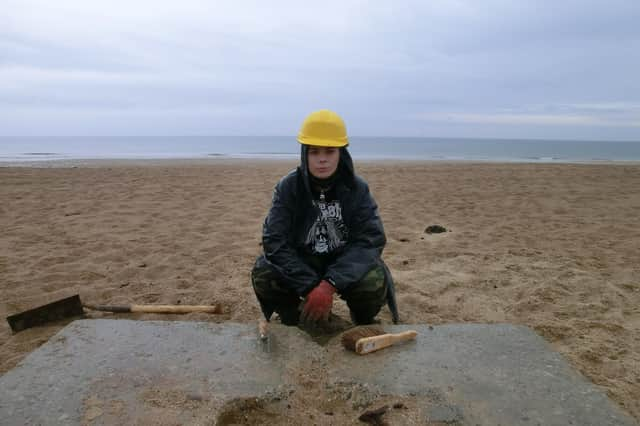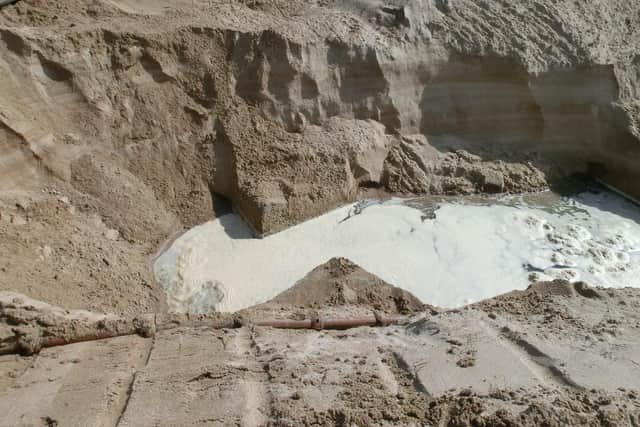Archaeologists monitor cabling works on Northumberland beach


Archaeologists monitoring a new fibreoptic cable linking the UK with Norway are guiding the cable through a landscape on Seaton Sluice beach filled with archaeology dating from prehistory to the Second World War.
Although the fibreoptic connection is good news as it will increase broadband speeds in the area, archaeologists are working to uncover a host of potential history, including from Viking raiders and waves of Luftwaffe bombers.
Advertisement
Hide AdAdvertisement
Hide AdBorder Reivers Archaeology Unit, based in Northumberland, have put together a team of experts in tidal zone, prehistoric and conflict archaeology to make sure no information about the past is lost during the work.


Metres beneath the beach, dunes and Ranch Car Park, which runs the whole length of Links Road, is a lost world of peaty marshes and forests which extends out under the sea.
The archaeologists have so far recovered a piece of wood that appears to have been worked, and soil samples which contain cinders that may have come from the fires of the hunter-gatherer camps.
Buried in the shifting sands are anti-tank blocks and possibly a gun emplacement which were just some of the defences put in place to defend the beach and the nearby Gloucester Lodge heavy anti-aircraft battery and radar site, which is now a scheduled monument.
Advertisement
Hide AdAdvertisement
Hide AdOn Black Thursday, August 15, 1940, Luftwaffe bombers with fighter escorts launched from airfields in occupied Norway to attack the North East of England.
Schwarzer Donnerstag saw the Luftwaffe mount its greatest amount of sorties, but believing that England’s defences were concentrated in the south they suffered their heaviest losses as the northern fighter pilots and anti-aircraft gunners were prepared for the attack, downing more than half of the German planes.
A spokesperson for the Border Reivers Archaeology Unit said: “Members of the public are asked to stay well away from any and all excavations on the beach.
"Beach sand is one of the most dangerous ground types to dig into, as the edges of any holes will collapse at the slightest pressure, even at a distance of more than a metre from the edge.”